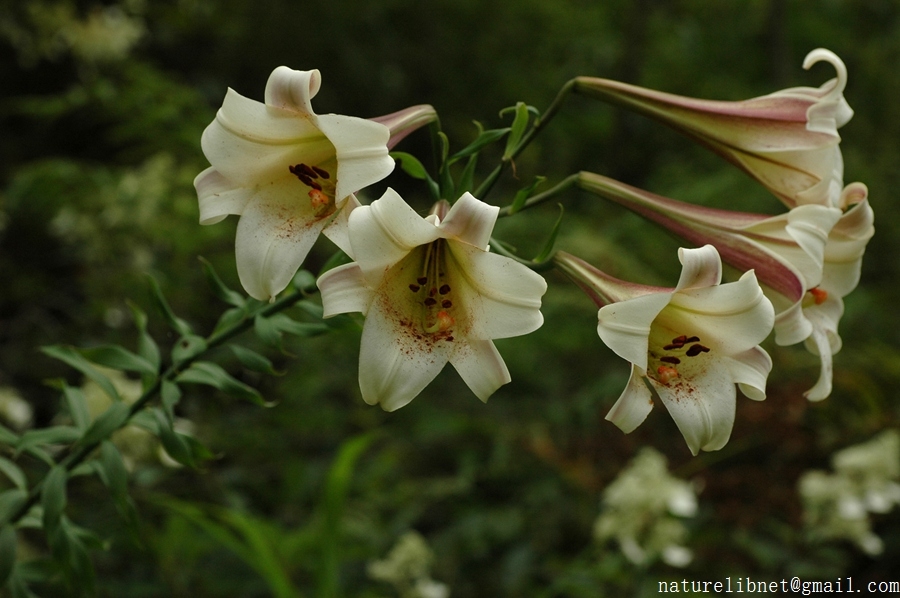- Scientific Name: Lilium brownii F. E. Brown ex Miellez
- Ref: Cat. Expos. Soc. 1841
- Synonyms: Lilium australe Stapf; L. brownii var. australe (Stapf) Stearn.
- Chinese Common Name: 野百合 yěbǎihé
- Family: Liliaceae
- Genus: Lilium
- Distribution: Sparse forests, thickets, grassy slopes, rocky hillsides along ravines or streams,wastelands around villages; 100–2200 m. Anhui, Fujian, Gansu, Guangdong, Guangxi, Guizhou, Hebei, Henan, Hubei, Hunan, Jiangsu, Jiangxi, Shaanxi, Shanxi, Sichuan, Yunnan, Zhejiang.
- Photo: 07/24/2009, Mt.Jinggang, Jiangxi
Bulb globose, 2--4.5 cm in diam.; scales white, lanceolate, 1.8--4 × 0.8--1.4 cm. Stem 0.7--2 m, smooth or papillose. Leaves scattered, frequently distal ones gradually becoming smaller, lanceolate, linear, oblanceolate, or obovate, 7--15 × (0.6--)1--2 cm, 5--7-veined. Flowers solitary or several in a subumbel, funnelform, fragrant. Tepals spreading distally and recurved apically, milk white, suffused purplish, unspotted; outer ones oblong-oblanceolate, 13--18 × 2--4.3 cm; inner ones spatulate, 3.4--5 cm wide; nectaries papillose on both surfaces. Stamens curved upward; filaments 10--13 cm, densely pilose to glabrous. Style 8.5--11 cm. Capsule 4.5--6 × ca. 3.5 cm. Fl. Jun--Aug, fr. Sep--Oct.(Flora of China)
